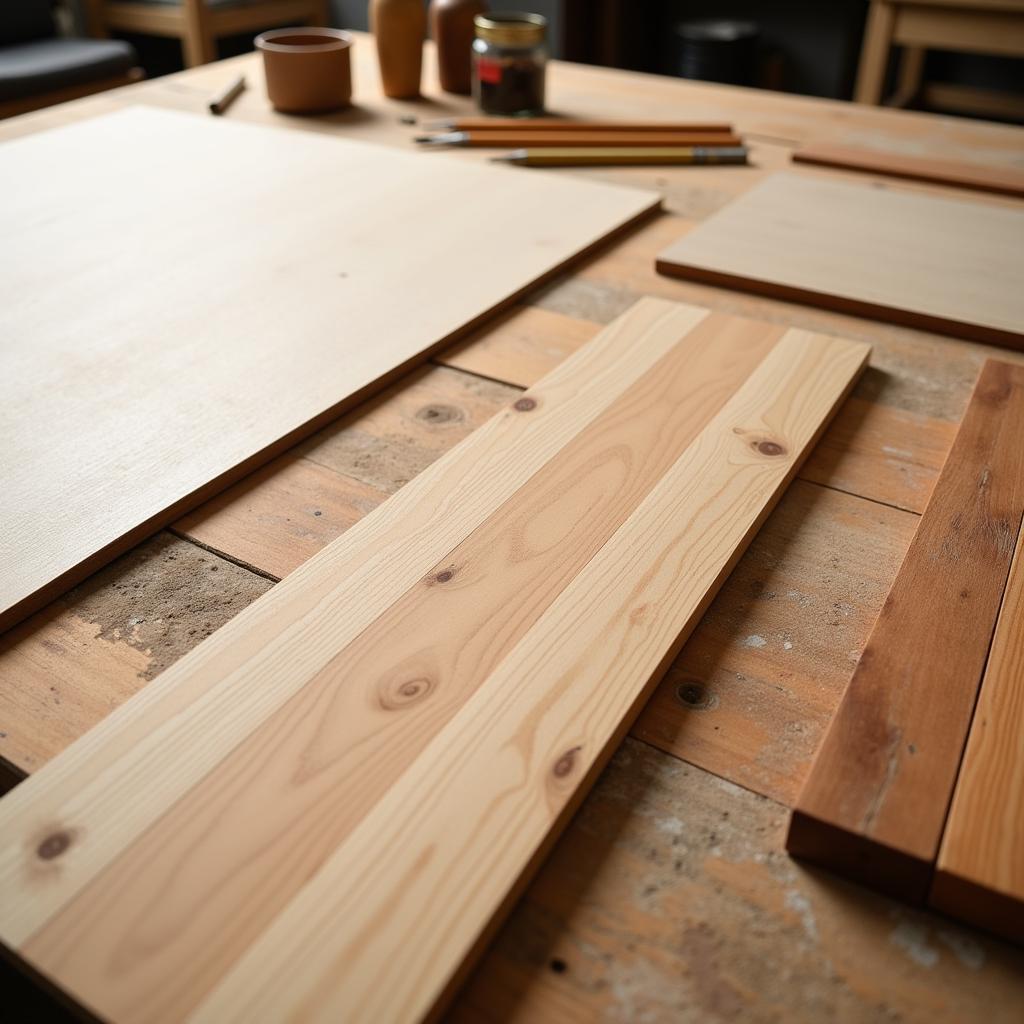Unleashing Creativity: Exploring Wood Boards for Art
Wood boards offer a captivating canvas for artistic expression. From seasoned professionals to budding enthusiasts, the allure of wood as an artistic medium lies in its inherent warmth, versatility, and unique texture. This guide delves into the world of Wood Boards For Art, exploring their diverse types, applications, and creative possibilities.
Artists have long been drawn to the natural beauty and versatility of wood. From intricate carvings to vibrant paintings, wooden art boards provide a sturdy and inspiring foundation. Whether you’re a seasoned painter, a woodburning enthusiast, or just starting your artistic journey, understanding the nuances of wood boards is crucial. This exploration will guide you through the various types, their unique characteristics, and how to choose the perfect board for your next masterpiece. What makes wood so compelling for artists? It’s the interplay of texture, grain, and the inherent warmth that brings a unique dimension to any artwork.
Choosing the Right Wood Board for Your Artistic Vision
Selecting the perfect wood board is akin to choosing the right instrument for a musician. Different woods possess unique characteristics that influence the final outcome of your art. From the smooth, fine grain of birch to the rustic charm of reclaimed wood, each type offers a distinct aesthetic and practical advantage. For instance, a smooth, primed birch panel is ideal for detailed painting, while a textured piece of oak might be perfect for a woodburning project.
What are the key factors to consider when selecting a wood board? The type of art you intend to create, the desired finish, and your budget all play a role. For beginners, experimenting with affordable options like plywood or MDF can be a great starting point.
 Choosing the Right Wood Boards for Painting
Choosing the Right Wood Boards for Painting
Preparing Your Wood Board for Artistic Endeavors
Proper preparation is essential for a successful and long-lasting piece of art. This involves sanding the surface smooth, applying a sealant or primer to prevent warping and ensure even paint application, and sometimes even adding a ground layer depending on the chosen medium. For delicate mediums like watercolor, a specialized absorbent ground may be necessary.
How do you prepare a wood board for painting? Start by sanding the surface to remove any imperfections and create a smooth canvas. Next, apply a sealant or primer to protect the wood and ensure that your paint adheres evenly. Remember to let each layer dry completely before proceeding to the next step.
Exploring Different Art Forms on Wood Boards
Wood boards offer a versatile surface for a wide range of art forms. From painting and drawing to woodburning and mixed media, the possibilities are endless. The art workbench can transform into a center of boundless creativity. Imagine creating stunning pyrography designs on a richly grained piece of cherry wood, or crafting a vibrant acrylic painting on a smooth, gessoed panel.
“Wood offers a unique warmth and character that other surfaces simply can’t replicate,” says renowned mixed media artist, Amelia Stone. “Its natural texture and grain add another layer of depth and interest to any artwork.”
What types of art can be created on wood boards? The options are incredibly diverse. Painting, drawing, wood burning, carving, mixed media, and even inlay work are all possibilities. The natural beauty of the wood can enhance any artistic style. Experiment and explore the various techniques to discover what resonates with your creative vision. If you are looking for employment opportunities within the art field, consider checking out art jobs vermont.
Protecting and Displaying Your Wood Art
Once your artwork is complete, proper sealing and framing are essential for its longevity. A protective varnish or sealant will safeguard your masterpiece from environmental factors, while a well-chosen frame will enhance its presentation and provide added protection.
“Protecting your artwork is just as important as the creative process itself,” advises art conservator, David Miller. “A well-sealed and framed piece will stand the test of time and retain its beauty for generations to come.”
Consider using art deco upholstery fabric to add a touch of elegance to your workspace. And for a truly inspiring dining experience, arts and crafts dining chairs can elevate any meal.
Conclusion
Wood boards for art offer a captivating blend of natural beauty and artistic potential. By understanding the different types of wood, proper preparation techniques, and various artistic applications, you can unlock a world of creative possibilities and bring your artistic vision to life on this unique and versatile canvas. From simple crafts to elaborate masterpieces, wood boards provide a foundation for artistic expression that is both enduring and inspiring.
FAQ
- What is the best wood for painting?
- How do I prepare a wood board for oil painting?
- What is the difference between plywood and MDF for art?
- How do I seal a finished artwork on wood?
- Where can I buy wood boards for art?
- What types of paint are suitable for wood boards?
- How do I prevent warping in my wood art?
For support, contact us at Phone Number: 02462573573, Email: [email protected] or visit us at Savico Megamall, 7-9 Đ. Nguyễn Văn Linh, Gia Thụy, Long Biên, Hà Nội 10000, Việt Nam. We have a 24/7 customer service team.

